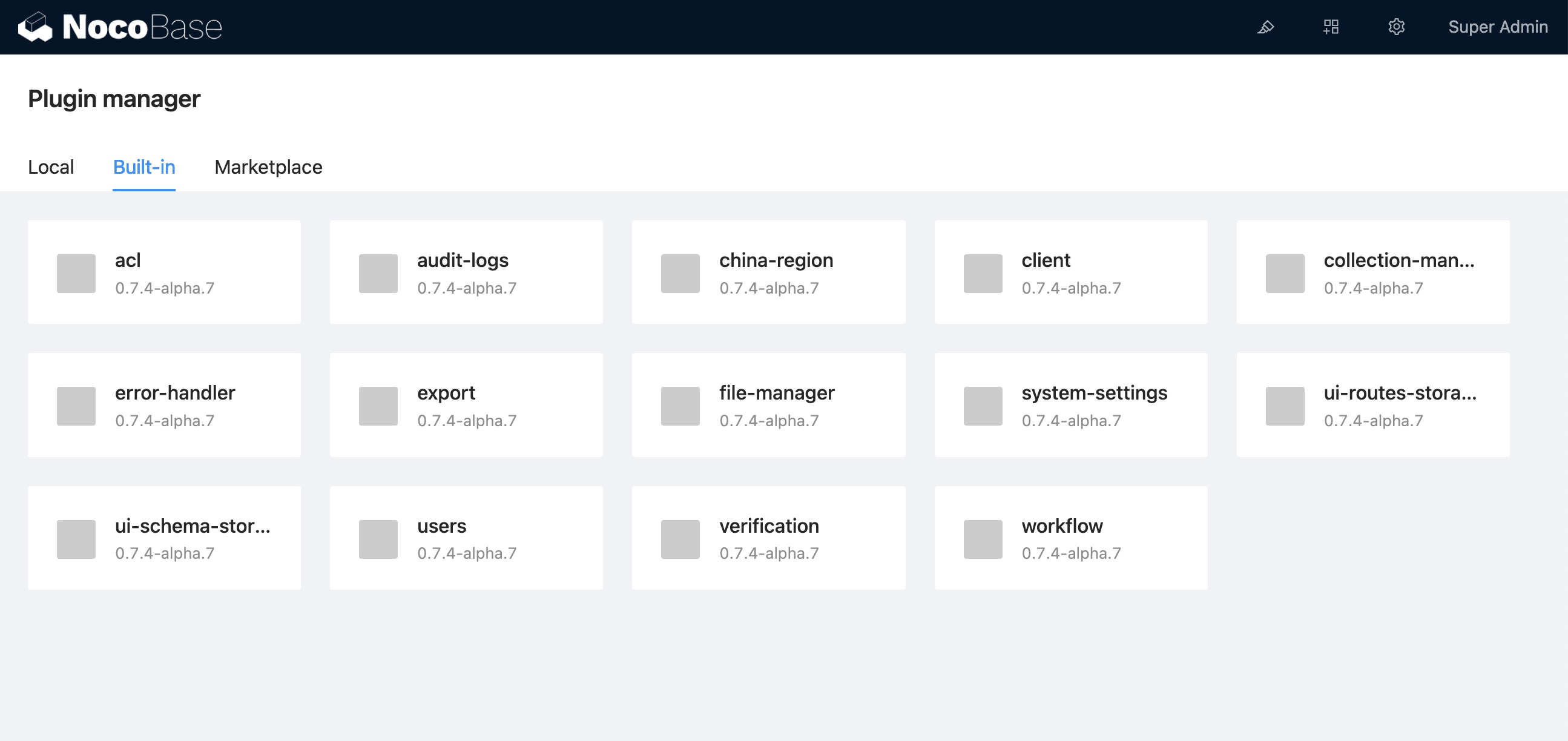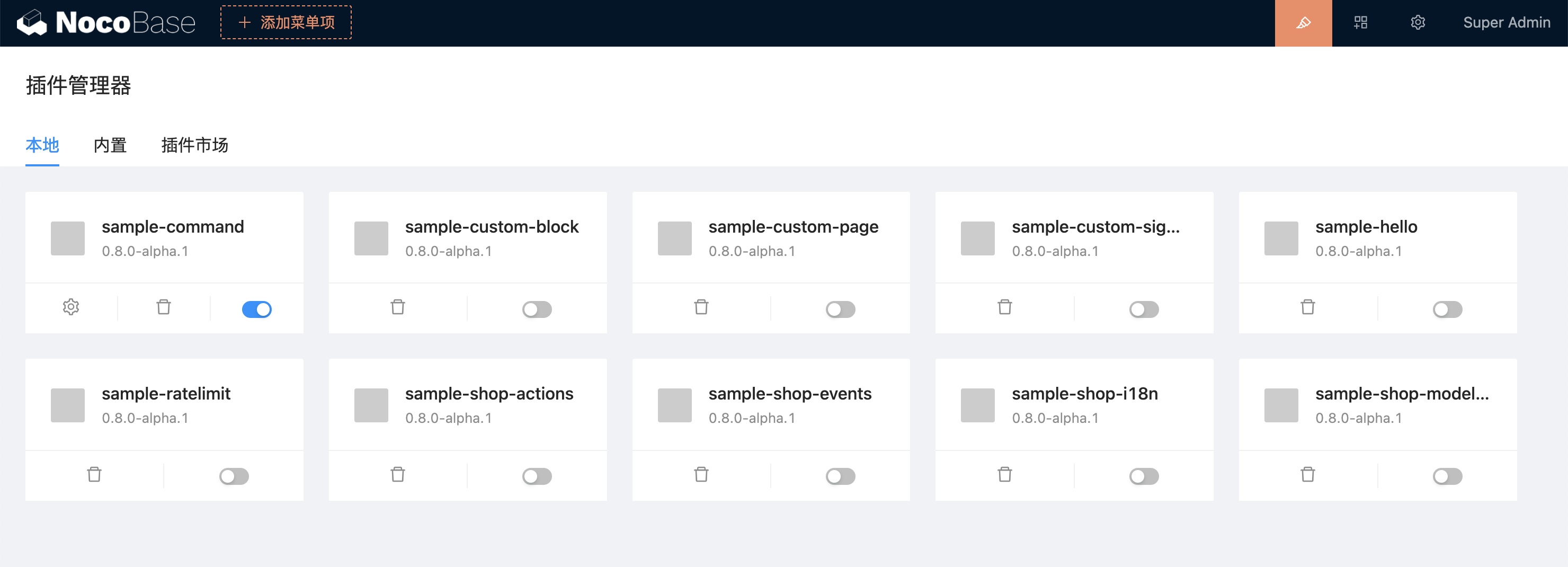* feat: add settingsCenter * fix: style bug * chore: optimized code * refactor: settingCenter Auth * feat: add aclSnippet option * refactor: all plugin's setting center api * feat: add plugin with name * docs: add settings-center doc * fix: settings center menu sort by name * fix: change setting center layout * fix: change hello sort * test: add SettingsCenter.ts test case * fix: bug * fix: acl bug * fix: bug * fix: bug and 404 page * fix: test bug * fix: test bug * fix: bug * fix: locale * fix: styling * fix: rename settingsCenter to pluginSettingsManager * fix: styling * fix: e2e bug * fix: e2e bug * fix: locale * feat: update docs * fix: update --------- Co-authored-by: chenos <chenlinxh@gmail.com>
2.5 KiB
Introduction
NocoBase adopts microkernel architecture, functions are extended in the form of plugins. Front and back ends are separated. Various plugin interfaces are provided, and plugins are divided by functional modules with pluggable features.

The pluggable design reduces the coupling between modules and increases the reuse rate. As the plugin library continues to expand, common scenarios require only a combination of plugins to complete the base build. NocoBase's no-code platform, for example, is a combination of various plugins.

Plugin Manager
NocoBase provides a powerful plugin manager for managing plugins. The flow of the plugin manager is as follows

No-code Users can manage the activation and deactivation of local plugins through the interface at

Developers can also manage the complete plugin process by way of the CLI:
# Create the plugin
yarn pm create hello
# Register the plugin
yarn pm add hello
# Activate the plugin
yarn pm enable hello
# Disable the plugin
yarn pm disable hello
# Remove the plugin
yarn pm remove hello
For more plugin examples, see packages/samples.
Extensibility
Whether it is generic functionality or personalization, it is recommended to write it as a plugin. NocoBase is extensible in all aspects.
- It can be user-intuitive interface-related page modules, block types, action types, field types, etc.
- Filters, validators, access restrictions, etc. for enhancing or restricting the HTTP API
- It can also be enhancements to underlying data tables, migrations, events, command lines, etc.
Distribution of modules.
- Server
- Collections & Fields: mainly used for system table configuration. Business tables are recommended to be configured in "Plugin Settings Manager - Collection manager".
- Resources & Actions: Mainly used to extend the Action API
- Middleware: Middleware
- Events: Events
- I18n: server-side internationalization
- Commands: Custom command lines
- Migrations: Migration scripts
- Client
- UI Schema Designer: Page Designer
- UI Router: When there is a need for custom pages
- Plugin Settings Manager: Provides configuration pages for plugins
- I18n: Client side internationalization